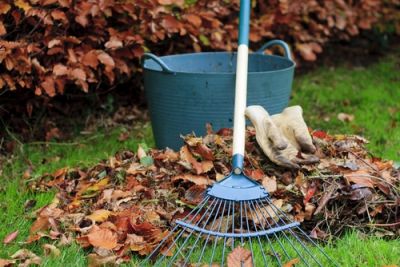
The falling autumn leaves bring the final bounty of the gardening year: the raw materials for lovely, crumbly leaf mould, one of the gardener’s best-kept secrets.
Many people simply burn their autumn leaves on bonfires or dispose of them in the green waste, not realising they are throwing away one of the most precious resources in the garden. Leafmould is nature’s own soil conditioner, opening up clay soils and holding on to moisture in dry, free-draining sand or chalk. It is invaluable for mulching, especially woodland plants like spring bulbs, hostas and foxgloves, and for mixing into home-made composts. Best of all, it’s free.
Now is the time to gather up your leaves from lawns and borders, using a spring-tined rake to avoid damaging plants. A hinged grabber helps save your back, lifting the leaves effortlessly from ground to wheelbarrow.
Once you’ve collected them, you’ll need somewhere to store them for a year or two while they rot down. It’s very straightforward to make yourself a simple leaf mould bin: just bang four wooden posts into the ground in a rough square about 1m across, then staple chicken wire around it to make a box.
If you haven’t room for a dedicated leaf mould bin, use black bin liners instead. Puncture them with a garden fork so there are plenty of ventilation holes, and cram as many leaves into the bags as you can (they’ll lose much of their volume as they rot).
Make sure the leaves are damp – tip a bucket or two of water over the top if the weather has been dry. Then simply leave them there for at least one year, and two if you have the patience. Over time they rot down into dark, crumbly leaf mould that’s the gardener’s black gold.
